7 start with T start with T
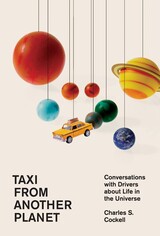
Insightful, good-humored essays on the possibilities of alien life and the uses of space exploration, based on an astrobiologist’s everyday conversations with his fellow humans—taxi drivers, to be precise.
If you’ve ever sat in the back seat of a taxi, you know that cabbies like to talk. Sports or politics, your job or theirs, taxi drivers are fine conversationalists on just about any topic. And when the passenger is astrobiologist Charles Cockell, that topic is usually space and what, if anything, lives out there.
Inspired by conversations with drivers all over the world, Taxi from Another Planet tackles the questions that everyday people have about the cosmos and our place in it. Will we understand aliens? What if there isn’t life out in the universe? Is Mars our Plan B? And why is the government spending tax dollars on space programs anyway? Each essay in this genial collection takes questions like these as a starting point on the way to a range of insightful, even poignant, observations. Cockell delves into debates over the inevitability of life and looks to both human history and scientific knowledge to consider what first contact will be like and what we can expect from spacefaring societies. He also offers a forceful argument for the sympathies between space exploration and environmentalism.
A shrewd and entertaining foray into the most fundamental mysteries, Taxi from Another Planet brings together the wisdom of scientific experts and their fellow citizens of Earth, the better to understand how life might unfold elsewhere.

Drake has revised his earlier abridged translation of the Starry Messenger, and for the first time the entire work is presented here in modern English. No other edition or translation of this famous work has analyzed Galileo's recorded observations in detail, compared them with modern calculations, or explained the later use he made of them. In the accompanying fictional dialogue, Salviati, Sagredo, and Sarpi reread the Starry Messenger in 1613 and discuss events and issues raised in the three years since its publication. Much of the dialogue is based on archival materials not previously cited in English. Drake has unearthed a wealth of information that will interest the lay reader as well as the historian and the scientist—descriptions of the various and occasionally bizarre critics of Galileo, a reconstruction of Galileo's promised book on the system of the world, his tables of observations and calculations of satellite motions, and evidence for an early tide theory. It was this theory explaining tides by motions of the earth, rather than the influence of Platonic metaphysics, Drake argues that played a major role in Galileo's acceptance of Copernican astronomy.
Telescopes, Tides, and Tactics is a thorough portrait of Galileo as a working astronomer. Offering much more than a commentary on the Starry Messenger, Drake has written a novel and absorbing contribution to the history of physics and astronomy and the study of the Scientific Revolution.
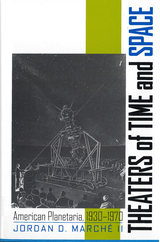
Every year, millions of Americans visit planetariums and are captivated by their strikingly realistic portrayal of the night sky. Today, it is indeed difficult to imagine astronomy education without these magnificent celestial theaters. But projection planetariums, first developed in Germany, have been a part of American museum pedagogy only since the early twentieth century and were not widespread until the 1960s.
In this unique social history,former planetarium director and historian of science Jordan D. Marché II offers the first complete account of the community of individuals and institutions that, during the period between 1930 and 1970, made planetariums the popular teaching aids they are today. Marché addresses issues such as the role of gender and social developments within the planetarium community, institutional patronage, and the popularization of science. He reveals how, at different times, various groups, including financial donors, amateur scientists, and government officials, viewed the planetarium as an instrument through which they could shape public understanding and perceptions of astronomy and space science.
Offering an insightful, wide-ranging look into the origins of an institution that has fascinated millions, Theaters of Timeand Space brings new perspectives to how one educational community changed the cultural complexion of science, helped shape public attitudes toward the U.S. space program, and even contributed to policy decisions regarding allocations for future space research.
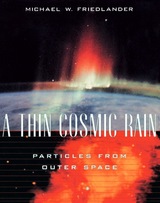
Enigmatic for many years, cosmic rays are now known to be not rays at all, but particles, the nuclei of atoms, raining down continually on the earth, where they can be detected throughout the atmosphere and sometimes even thousands of feet underground. This book tells the long-running detective story behind the discovery and study of cosmic rays, a story that stretches from the early days of subatomic particle physics in the 1890s to the frontiers of high-energy astrophysics today.
Writing for the amateur scientist and the educated general reader, Michael Friedlander, a cosmic ray researcher, relates the history of cosmic ray science from its accidental discovery to its present status. He explains how cosmic rays are identified and how their energies are measured, then surveys current knowledge and theories of thin cosmic rain. The most thorough, up-to-date, and readable account of these intriguing phenomena, his book makes us party to the search into the nature, behavior, and origins of cosmic rays—and into the sources of their enormous energy, sometimes hundreds of millions times greater than the energy achievable in the most powerful earthbound particle accelerators. As this search led unexpectedly to the discovery of new particles such as the muon, pion, kaon, and hyperon, and as it reveals scenes of awesome violence in the cosmos and offers clues about black holes, supernovas, neutron stars, quasars, and neutrinos, we see clearly why cosmic rays remain central to an astonishingly diverse range of research studies on scales infinitesimally small and large.
Attractively illustrated, engagingly written, this is a fascinating inside look at a science at the center of our understanding of our universe.
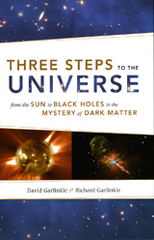
The authors begin by inviting readers to step away from the Earth and reconsider our Sun. What we can directly observe of this star is limited to its surface, but with the advent of telescopes and spectroscopy, scientists know more than ever about its physical characteristics, origins, and projected lifetime. From the Sun, the authors journey further out into space to explore black holes. The Garfinkle brothers explain that our understanding of these astronomical oddities began in theory, and growing mathematical and physical evidence has unexpectedly supported it. From black holes, the authors lead us further into the unknown, to the dark matter and energy that pervade our universe, where science teeters on the edge of theory and discovery. Returning from the depths of space, the final section of the book brings the reader back down to Earth for a final look at the practice of science, ending with a practical guide to discerning real science from pseudoscience among the cacophony of print and online scientific sources.
Three Steps to the Universe will reward anyone interested in learning more about the universe around us and shows how scientists uncover its mysteries.

A streak of light crosses the night sky as a bit of extraterrestrial material falls to Earth.
Meteorites, which range from particles of dust to massive chunks of metal and rock, bombard the Earth constantly, adding hundreds of tons of new material to our planet each day. What are these objects? How do we recover and study them? Where do they come from, and what do they tell us about the birth and infancy of the solar system? Why do many scientists now believe that meteorites have played a dramatic, albeit occasional, role in the evolution of life on Earth?
In Thunderstones and Shooting Stars, Robert T. Dodd gives us an up-to-date report on these questions. He summarizes the evidence that leads scientists to believe that most meteorites come from asteroids, although a few come from the moon and a few more from a planet, probably Mars. He explains how chondrites--the most numerous and primitive of meteorites--contribute to our evolving picture of the early solar system, and how some of them may tell us of events that took place beyond the sun and before its birth. Finally, he examines the controversial hypothesis that impacts by asteroids or comets have interrupted the evolution of life on Earth, accounting for such geological puzzles as the rapid demise of the dinosaurs.
Meteorites have been called "the poor man's space probe," for they are the only extraterrestrial rocks that we can collect without benefit of spacecraft. This lively and accessible book both illuminates the complex science of meteoritics and conveys a sense of its excitement. University teachers and students will appreciate its synthesis of new research on a broad range of topics, and amateurs will delight in its lucid presentation of a science that is unlocking many mysteries of Earth and space.
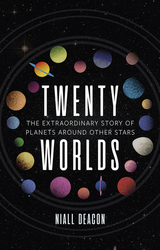
READERS
Browse our collection.
PUBLISHERS
See BiblioVault's publisher services.
STUDENT SERVICES
Files for college accessibility offices.
UChicago Accessibility Resources
home | accessibility | search | about | contact us
BiblioVault ® 2001 - 2024
The University of Chicago Press









